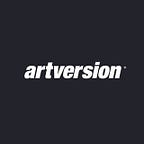The Correlation Between Cinema and UX Design
UX design, television and movie production are in many ways the same. One might argue that they’re exactly the same in terms of strategy, production and execution, striving for the same goals and facing the same challenges. When approaching a video project, you start with your story outline, move on to the script, flesh out the cinematography and then move on to the production. After the film is shot, it’s edited in post production, sprinkled with effects, color correction, and all the while the stakeholders are keeping a watchful eye from atop, making sure that what they’ve put their name on will live up to their expectations.
UX design starts and ends the same way. Your project begins with an outline, moves into the journey, then slithers through its stages of low, mid, and high fidelity wireframes. From there, the story is fleshed out, the design elements, images and assets are put in place, derivative of the user persona’s for which it’s intended. From there, elements and assets are sliced and sculpted, effects are sprinkled in, the development team implements the work and the stakeholders are sitting atop of the mountain, appeased. Threading together all of the components of the UX design is the content, UI, journeys and pathways, all in which are automated with the user in mind. Just like the movies, the user (audience) is the product; the medium is irrelevant.
Today, entertainment, usefulness, usability and purpose are interchangeable in the same vein as our habits or routines. You might find yourself constantly checking the same app over and over again on your phone just as you’d find yourself binge watching the same television show even though you know exactly what’s going to happen in the end. We’ve become less delicate in taste, and more predictable as designers, movie producers and television moguls have broken each and every one of our personalities down to a science. You move from one app to the next, from one show to another, one aesthetic replaces the last, and so on. The evolution of both UX and movies move in tandem as the look and feel of how we acquire certain information becomes homogenized.
We are the product; that’s marketing 101.That said, as the world turns, our storytelling adapts, vernacular expands and our languages merge with one another. This seems revelatory, but in reality it’s what’s been happening for thousands of years. From the campfire to the printing press, and on to the screen. The elements that make us human are vast. The elements that make us different from one another are equally innumerable. The one thing that threads us together on a molecular level is our quintessential need for storytelling. The science of storytelling has been so well perfected, it’s no wonder that we find stories with every experience we have, both in life and through digital interfaces. To find meaning and to bring meaning to what we do isn’t just a desire, but an unequivocal necessity as the propellant of our experience here on Earth. We, the designers and architects of humanity in the digital space should be embracing our cinematic urges, and tell the stories that we want to hear as to propagate cohesion between the experiences we design. Eventually, we’ll realize that no matter where you’re designing from, your story holds water no matter where it lands.
